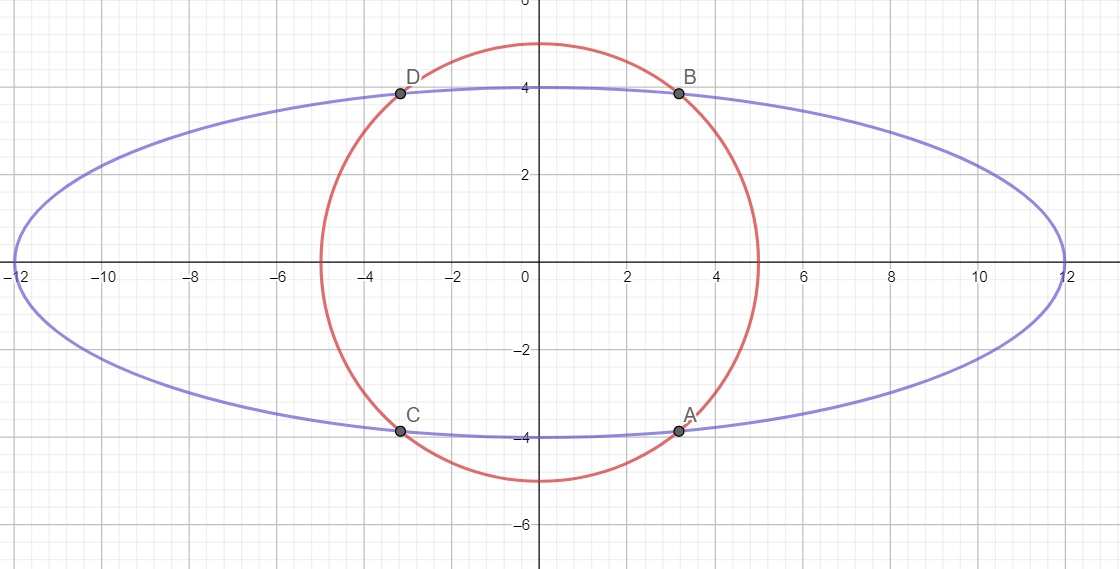Question
Question: If \(A=\left\\{ \left( x,y \right):{{x}^{2}}+{{y}^{2}}=25 \right\\}\) and \(B=\left\\{ \left( x,y \r...
If A=\left\\{ \left( x,y \right):{{x}^{2}}+{{y}^{2}}=25 \right\\} and B=\left\\{ \left( x,y \right):{{x}^{2}}+9{{y}^{2}}=144 \right\\}, then A⋂B contains
[a] one point
[b] three points
[c] two points
[d] four points.
Solution
Hint: Assume (x,y) is in both sets A and B. Hence using the definitions of sets A and B form two equations in x and y. Solve for x and y. The number of solutions of the system is the number of points in A⋂B. Hence find the number of points in A⋂B. Alternatively, plot the two equations on a graph paper. The number of points of intersection of both curves gives the number of points in the intersection of sets A and B.
Complete step-by-step solution -
Let (x,y) be an element in both A and B.
Since (x,y) is in A, we have
x2+y2=25 (i)
Also, since (x,y) is in B, we have
x2+9y2=144 (ii)
Subtracting equation (i) from equation (ii), we get
9y2−y2=144−25⇒8y2=119
Dividing both sides by 8, we get
y2=8119
Subtracting 8119 from both sides, we get
y2−8119=0
Writing the above expression in a2−b2 form, we get
y2−(8119)2=0
We know that (a2−b2)=(a+b)(a−b)
Using the above formula, we get
(y+8119)(y−8119)=0
Using zero product property, we have
y+8119=0 or y−8119=0
Hence y=−8119 or y=8119.
Also. We have
x2+y2=25
Substituting the value of y2, we get
x2+8119=25
Subtracting 8119 from both sides, we get
x2=25−8119=8200−119=881
Subtracting 881 from both sides, we get
x2−881=0
Writing the above expression in a2−b2 form, we get
x2−(881)2=0
We know that (a2−b2)=(a+b)(a−b)
Using the above formula, we get
(x+881)(x−881)=0
Using zero product property, we have
x+881=0 or x−881=0
Hence x=−881 or x=881.
Hence the solutions are (881,8119),(−881,8119),(881,−8119) and (−881,−8119).
Hence there are four points in A⋂B
Hence option [d] is correct.
Note: Alternatively, we have
x2+y2=25 is an equation of a circle with centre at (0,0) and radius = 5
And x2+9y2=144 is an equation of an ellipse with centre at (0,0), major axis length as 24 and minor axis length as 8. The major axis is along the x-axis, and the minor axis is along the y-axis.
Keeping all these points in mind, we plot the curves, as shown below.

As is evident from the graph, there are four points of intersection. Hence the cardinality of A⋂B is 4.
